AMBLING IN THE ADELAIDE HILLS – MOTORCYCLE MUSEUMS
By Murray Barnard
The Adelaide Hills are covered in fabulous winding roads which offer great scenery and variety as well as a satisfying riding experience. It is no great surprise then that South Australia has long been the home of a vast range of old motorbikes. Old bikes turn up all the time in South Oz and a very proud motorcycle tradition is still maintained there.
Throw in the added advantages of the Clare, Barossa and McClaren Vale liquid goldfields and you can have a great motorcycling holiday in the region, as long as you don’t drink the water.
Funny thing Sod Oz water, it comes out of the tap brown and muddy, smells and tastes awful and is hard as nails. Enterprising businessmen make a fortune in the State selling bottled spring water. The real joke is that although there are no springs around Adelaide (well, maybe one), most of the water is filtered bore water; but there is no law against calling it spring water.
One of the greatest attractions for the touring biker has to be the National Motor Museum which houses a vast range of motorcycles and motorcycle memorabilia. The Museum is located in the old Peerless Flour Mill in Birdwood, which used to be called Blumberg, except that that name offended the jingoists during the Great War (don’t know what was so great about it?) so they renamed the place after General Birdwood of Gallipoli fame, and the name has stuck since.
We all owe Jack Kaines a favour for being such an avid bowerbird, motorcycle and car enthusiast. He overcame all the hurdles and restrictions to establish his dream of a motor museum and the wonderfully presented National Motor Museum is a monument to this man.
Jack had a passion for motorcycles which began during the first Big One (or should that be the Great One?) when he served as a motorcycle despatch rider. Over many years Jack’s obsession with bric-a-brac and machinery resulted in a large collection of motorcycles and cars which he gathered together in the re-furbished Birdwood Mill. After much hard work and loving care the Mill opened as a private museum on November 28th, 1965.
In September 1967, fellow enthusiast Len Vigor purchased a share of the action. Len loved history and fine machinery and together with Jack he then expanded the museum to include more cars and other technological oddities.
With the death of Jack, in 1975, things declined somewhat and the museum was put up for auction in February of 1979. Through the concerted efforts of some fore-sighted enthusiasts the Dunstan Government was persuaded to buy the museum as a State asset rather than risk having the collection broken up and lost to the State.
Compare this to the West Australian State Government’s action where they auctioned off a donated collection of rare and old cars a few years back to make a quick quid rather than maintain them in the W.A. Museum.
In 1981 the Birdwood Mill Museum became a division of the History Trust of S.A. and then formally the National Motor Museum.
The motorcycle element of the museum consists of both the original bike collection and a varying collection of “on loan” private machines. The display area is in an annexe to the main display area and now is quite removed from the atmosphere of the old mill.
There are so many bikes and engines that the bikes are quite difficult to view, that is unless you like viewing bikes from the front. The difficulty arises from their being packed in side by side. Still, I ought not complain, where else can the Australian motorcyclist see such an incomparable selection without paying a fortune for travel.
A few real treasures are given a bit more room to view; but most do not offer an all round examination and it is not possible to get down and examine the machines closely and in detail. Climbing over the rope would be most unwise unless you wish to risk the wrath of the security guards, who watch suspicious characters like me. Still I can’t complain, can I ?
I counted 147 motorcycles before I ran out of fingers, toes and other appendages; and that’s not counting the engines and other paraphernalia that litters the display area. I couldn’t determine any order to the display largely because I started at the wrong end. There is a decent excuse though, as the closest door to the bike display actually brings you in halfway through the chronological order of the display. To start at the oldest bikes and work your way up to the recent models you need to go almost through to the main car display hall. Turn right just before the tin tops and there is an un-interrupted view of motorcycling history. Wander down the aisle keeping your view to the right-hand side, round the U-shaped display area and back again and the motorcycles will be viewed in roughly chronological order.
To the motorcycle mad, as I am, such subtleties will escape you as you are sucked in head first by the immaculate 1933 Brough Superior and sidecar at the entry closest to the front gate. Wow, how do they get a JAP engine to shine like that and how will my camera light meter ever cope (regrettably not)?
Where to now, everything else pales into insignificance, even the Panther 600 in the stunning loo door green paint job. But wait; is that a Benelli 250 four road-racer, wow, let me down on the planet…..and, oh no, a Waratah two-stroke, just like Wayne Gardner’s! Oh, and that’s a funny touch, a chart of the 1992 World 500 GP finishing order with Fred Gassit on a Vespa, last, as a DNF.
Not everyone here is trapped in the belt-drive era! Hold me back, let me at it….I haven’t felt like this since I saw the movie “Age of Consent” when I was under the age of consent. A 1936 250cc supercharged Auto Union DKW! A 3 cylinder water-cooled two stroke, blessed with 2 heads and 4 con-rods. So this is the legendary DKW brought to Australia for the 1937 S.A. TT on the winding 8.75 mile street circuit at Lobethal S.A. The bike found its way here during a “cultural and sporting exchange” with that most cultural and sporting nation, NAZI Germany! DKW’s No. 1 works rider, Ewald Kluge, brought a rotary valve 250 with him as well as this rigid-framed supercharged model as a spare practice bike.
The Deek features a third forward facing cylinder which acts as a “kompressor” to force the fuel mixture into the two vertical cylinders. The smaller front cylinder operates the transfer ports and the rear cylinder fires the mixture. Although never revved over 3700 rpm the DKW’s twin port exhausts and megaphones delivered an alarming noise, best remembered as being reputedly loud enough to hear on the English mainland when being raced on the Isle of Man. The frame is all welded and accommodates a radiator between the front down tubes for the essential water cooling system. Eric Williams salvaged the bike in 1960 when it was a rusty, corroded wreck and over 15 years restored it to its current show standard. The bike is for sale, so look at it now, a unique piece of motorcycling history that will inevitably leave the country one day.
The 1938 Excelsior water-cooled two-stroke excites my interest for a minute. A 1952 Villiers engined Tilbrook Wall of Death machine looks interesting, as is the Yamaha TD1B 250cc road racer of 1966; but I am drawn to the 500cc Rudge Works TT racer. Reputedly ridden into 4th place on the Isle of Man by Wal Handley in 1934 it was brought to Australia to contest the 1935 Australian Senior TT at Phillip Island. I can’t get to it though as it is safely ensconced behind a perspex viewing case.
Whatever your taste in motorcycles, be it Bartali, Brough, Scott, Levis, Indian, Velocette, BSA, Excelsior, Coventry-Eagle, AJW, Ariel, Rudge, OEC, Matchless, Harley, Panther, HMW, Big X (the editorial delight) , Elliott-Payneham, Villiers, Tilbrook, Waratah, Bultaco, Honda, Rickman, Greeves, Benelli, Yamaha, Kreidler, MV, DKW, Douglas, Vincent, Suzuki, Jawa, Lilac, Cossack, Ner-a-car, Flying Merkel, Ixion, Ducati or Triumph you’ll be sure to find something of interest in the Birdwood Museum. Shame about Moto-Guzzi and Laverda, guess their owners are too busy riding their machines to put them in a museum?
Close to 100,000 visitors a year find their way to the museum and enjoy the excellent displays be they bike or car enthusiasts. Birdwood Motor Museum is open 9-5 every day except Christmas Day. Not only can you enjoy the Museum; but as a motorcyclist you have the extra pleasure of the magnificent roads in the Adelaide Hills.
These roads can even take you to several other motorcycle related displays in near proximity to Birdwood. Care to sample the streets of Lobethal where the DKW shook the windows of local citizens with its appalling exhaust note? Well Lobethal has a little known treasure trove on the main street. Blink and you’d miss it. The only hint of something different is a sign suggesting that the little shop in the main street holds a private motorcycle museum.
Bill’s Bits and Bikes is run by Bill Mitchell and his son Mark Mitchell, speedway and scrambles enthusiasts who also like to dabble in old bikes. Entering the shop is like walking back in time; lined up in the shop are several bikes from the 30’s and a heap of old engines and tanks on the floor. Stacked on the crowded shelves are parts for most British bikes, tanks, gearboxes, cranks, magnetos, tank rubbers, foot-pegs, barrels, pistons, speedos what have you. Many are still packaged in the original boxes; if you’ve got 18 shillings and sixpence its yours! Bill is keen to help out anyone trying to locate parts and has obtained the dies for many British bike rubber components and steering damper knobs and will manufacture replacement items when demand is high enough to warrant the expense.
Even if you aren’t out to buy anything the bikes on display are enough to whet your appetite on the way to Birdwood Museum. The shop features a lovely 1930 Matchless X2-R Vee-twin, a Triumph 650 scrambler, 1930’s Triumph sloper, Coventry-Eagle, Dandy autocycle, Velocette Thruxton, side-valve Triumph single, 1937 350cc Triumph, Excelsior two-stroke, 1915 Radco and a Malvern Star autocycle delivery bike. There are machines here that you won’t see at Birdwood and you can walk around them and talk to Bill about them. Bill’s Bits and Bikes is open 9-5 Thursdays, Fridays and 9-12.30 Saturdays, don’t miss it if you’re up that way. Bill’s Bikes and Bits is still functioning. I don’t know if the old bikes are all still there but Lobethal also now features a Motorcycle and Heritage Museum.
Cruising along still, looking for opportunities to sample the nectar of the gods, and I don’t mean XXXX, I was surprised to come across a tyrannosaurus rex, a missile battery and a battered Land Rover all parked together opposite a lovely vista of grapevines, on the outskirts of Tanunda. The Kev Rohrlach Technology and Heritage Centre is an extraordinary collection of objects past, present and future, or so goes the tourist guff! Open 7 days a week, for our viewing pleasure, Kev Rohrlach’s collection is real eye-opener and stashed among the mounds of curiosities are 19 motorcycles, if I counted correctly.
The late Kev Rohrlach was an eccentric who did all the things we would have loved to have done, if we’d had the guts. Kev called himself a bower-bird; but he was clearly an adventurer with a sense of history. He has climbed Mt Kilimanjaro, flown the Simpson Desert in an ultra-light aircraft, conducted pioneer speed tests on Lake Eyre, been on an Himalayan expedition and built himself a unique museum. Collector of curiosities, tractors, cars militaria, motorcycles and discarded space and weapons research paraphernalia from Woomera, Ken has established a fascinating museum which is a must to see in the Barossa.
Kev was an active motorcyclist in his day, stunt-riding at the Angaston Show in 1950, road racing and scrambling. He set a Perth to Adelaide record for a motorcycle in 1952. With a co-rider, he rode a Triumph Trophy 500cc Twin the 1750 miles in 2 days, 20.75 hours (actual riding time (40 hours), averaging 43.75 mph and 70 mpg. A fabulous result considering the lack of maintained roads, the vast majority of which were unsealed.
Kev’s museum features a 1916 Indian twin, restored after being rescued from a rubbish tip; an Indian Board Racer, 500cc, from 1916 and an 1924 Indian Scout. You wouldn’t be wrong for thinking Kev loves Indians; but as well, distributed around the floor is a 1920 Harley flat-twin, a 1923 Harley Pup, a 1924 Harley V-twin and a 1942 WLA Harley. If that isn’t enough, a lovely 1954 Vincent HRD Rapide catches the eye, as well as a 1912 BSA single, a 1910 chain-drive AJS, a 1951 Matchless G9 twin, a 1941 BMW Wehrmacht sidecar outfit, an LE Velocette, a BSA M20, a 1923 Douglas, a 1946 BSA M21 outfit, a Corgi parachute bike, a BSA Bantam and a vintage Elliott.
The bikes are worth the visit alone; but Kev’s collection takes your breath away. Cars are not my cup of tea; but if you like some rare old cars, trucks and tractors then there are plenty here for you as well as many military vehicles and a Matilda tank.
If looking at dry, old exhibits is not your fancy then need I remind you of the many fine vineyards in near proximity, good riding and Prosit!
NB: This article was written some time ago and sadly the entire contents of the Rohrlach Museum were sold at auction in late 2001.
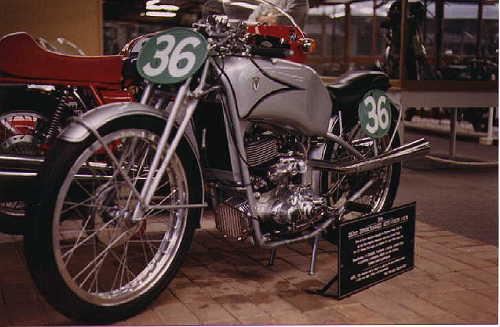
BirdWood – DKWRS 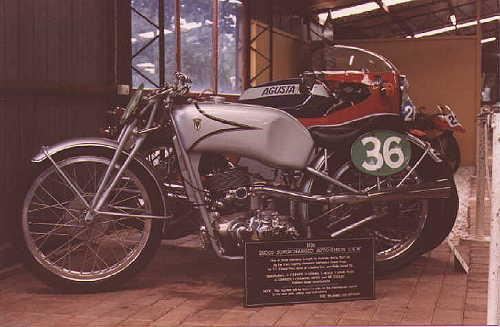
Birdwood – DKWRS
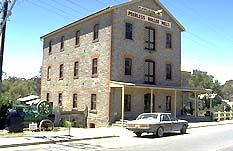
Birdwood Museum
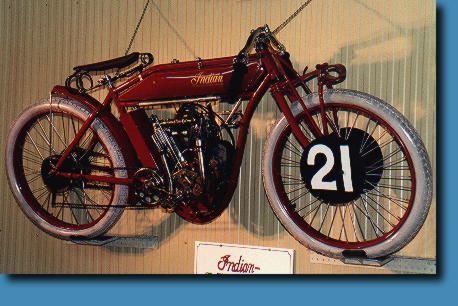
Rorlach – Indian Board Racer
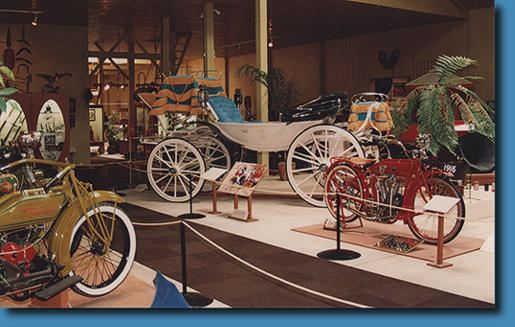
Rorlach Museum
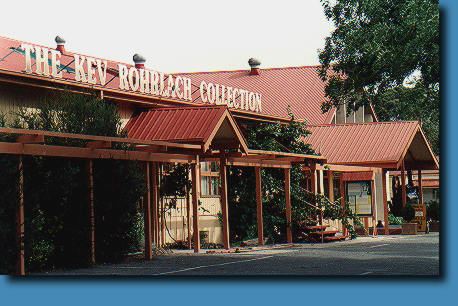
Rorlach Museum























